Recent Articles
Popular Makes
Body Types
2018 Ford Focus RS vs. 2018 Honda Civic Type R: Which is Best?
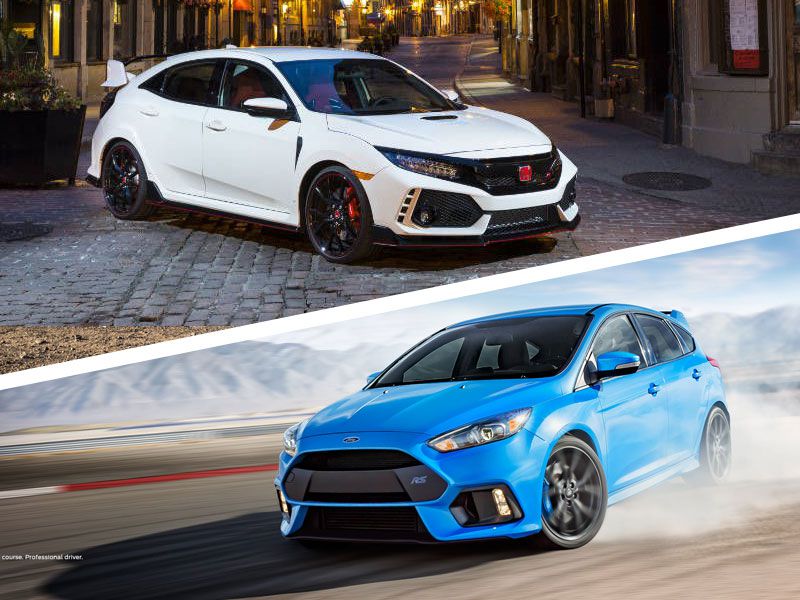
Honda Civic Type R vs Ford Focus RS ・ Photo by Ford and Honda
It’s rational to assume that something desired will be far more satisfying than something needed. Both a Toyota Corolla and a Porsche 911 will fulfill a need for transportation, but only one inspires much desire.
Then there’s the hot hatch. This class tackles both need and want — combining a peppy powertrain, agile handling and a utilitarian shape into a functional piece of performance equipment. Today's hottest hatchbacks have transcended mere fun-to-drive dynamics to become outright performance weapons without shedding their practical purpose. Honda’s Civic Type R and Ford’s Focus RS are the latest and greatest contenders. It’s time to decide which is best.
Pedigree
In the U.S., the battle between RS and Type R is only beginning, but the two performance badges have been facing off for years in Europe.
Honda’s Type R nameplate has been associated with the Civic hatch since 1997, when it featured 183 horsepower and Honda's VTEC powertrain technology. Every Type R since has featured red seats, a manual transmission, a big spoiler and ample power. Meanwhile, Team RS has been modifying European Fords with race-bred engineering since the early 1970s, but the Focus RS first arrived in 2002. It started out with 212 hp and could achieve 144 mph — and things only got more ridiculous from there.
Honda earns points for beating Ford to market with its super-hatch, but Ford keeps up by going nuts with horsepower. Not surprisingly, Team RS and Team Type R have equally fierce fan groups.
: Tie
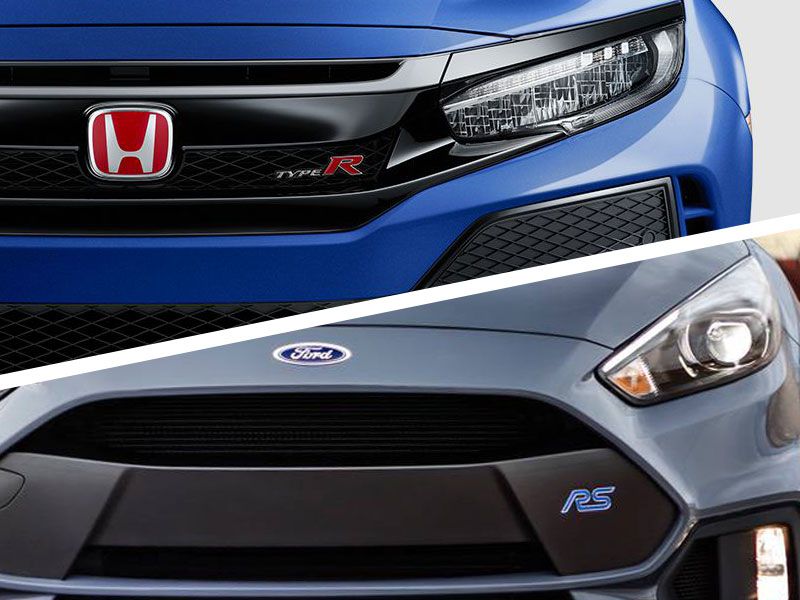
Photo by Ford and Honda
Styling
Over the years, hot hatchback styling has become increasingly ridiculous, but the line must be drawn somewhere. While its ancestors were anything but mild, the latest Ford Focus RS is more conservative. Flared bodywork, 19-inch black-painted wheels, lower ride height, large dual exhaust ports and a roof-mounted rear spoiler distinguish the RS exterior from other Focus models. The finished product is aggressive from all angles, but cohesive. Honda’s Civic Type R, by comparison, is a full-force slap to the face. It would blend in only amid Tokyo’s permanently illuminated downtown. Protruding fenders, a hood scoop, 20-inch black wheels, carbon-fiber-style lower body molds with red trim, a massive rear wing and three exhaust pipes are pure boy-racer design elements. For some, the Type R’s crazed styling is a draw (we certainly aren’t offended), but for most, the Focus RS’s more mature features are likely preferable.
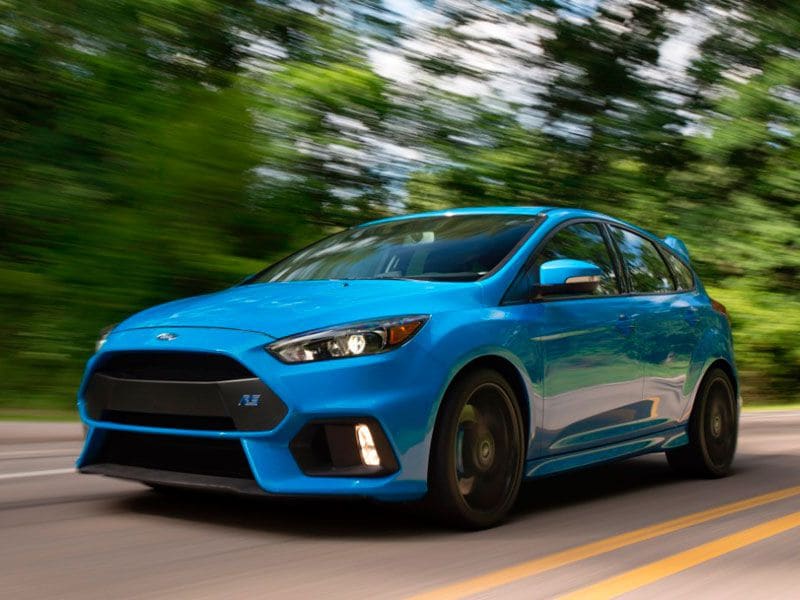
Photo by Ford
Comfort and Convenience
Exterior design comes down to personal preference, but interior comfort is typically more objective — and the Civic Type R is leaps and bounds more accommodating than the Focus RS. Apart from its excellent Recaro sport seats, the Ford's cabin feels like a budget-rate effort. Hard plastics, analog gauges and a monotone dashboard should be punishment enough, but it’s the ride quality that truly offends. None of its three driving modes (which adjust damping harshness) soften the ride sufficiently to bear on a daily basis. The Civic, by contrast, is fortified with a visually intriguing dashboard, comfortable and supportive red fabric seats, a brushed metal shift knob, leather-wrapped wheel, aluminum pedals, textured plastics and ample passenger volume. Ride quality is even more impressive. While none of the RS drive modes are tolerable, all of the Type R’s feel refined. In short, the Honda is a daily-driving pleasure. The Ford, not so much.
: Honda Civic Type R
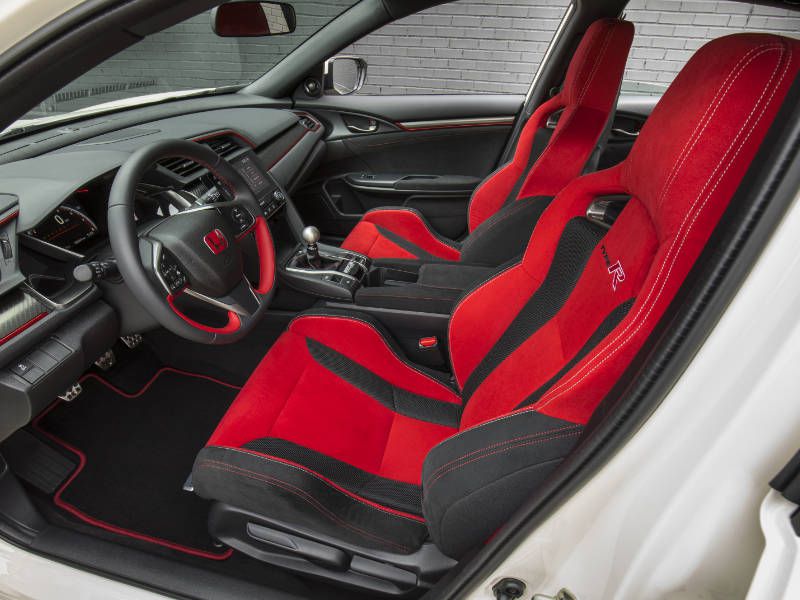
Photo by Honda
Powertrain
Not long ago, 300-plus horsepower was reserved for the most aggressive road-going performance cars. These days, you can find that kind of muscle in a $30,000 compact. Both the Focus RS and Civic Type R use turbocharged four-cylinder engines, but while the RS musters 350 hp and 350 lb-ft of torque, the Type R hits back with “only” 306 hp and 295 lb-ft. Digging a little deeper, the RS makes peak power earlier in the rev range, but the Type R makes peak torque earlier. In a drag race, the Focus arrives at 60 mph sooner (4.6 seconds), but the Civic isn’t far behind at 4.9 seconds. Let the two hatchbacks run long enough and the Honda eventually wins out with its 170 mph top speed (the Ford is limited to 165 mph), but the Focus is undeniably quicker in the real world. It’s close, but the Ford wins based on empirical facts.
: Ford Focus RS

Photo by Ford
Transmission and Fuel Economy
Output tells one side of the performance story, but how drivers engage with that power is another angle entirely. Both the Civic Type R and Focus RS use a six-speed manual transmission for maximum driving fun. There’s little to nit-pick about the RS gearbox, but the details favor Honda’s engineering. The Type R combines a high-quality shifter with a communicative clutch and short throws for a fantastic experience. The Focus RS’ higher-displacement motor offers greater power, but it also contributes to lower fuel economy. It manages 19 city, 25 highway and 22 combined mpg. The Civic Type R counters with an impressive 22 city, 28 highway and 25 combined mpg. : Honda Civic Type R
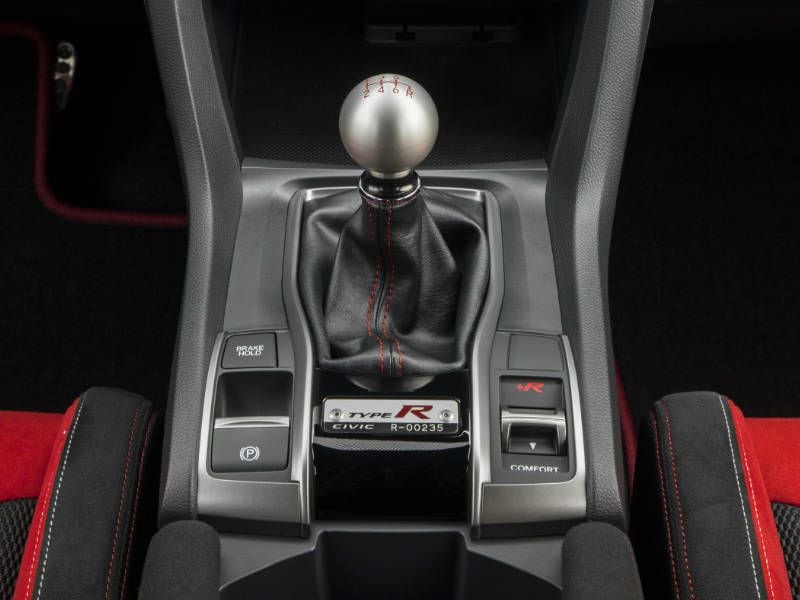
Photo by Honda
Driving Dynamics
Hot hatchbacks may spend most of their lives sane speeds on public roads, but the occasional track day or canyon run calls for exceptional handling. The Focus RS excels under the most demanding conditions. As momentum builds, the feisty Ford becomes smoother, letting its torque-vectoring all-wheel drive system put power where it’s needed to maintain grip. Strong braking, communicative steering and a well-sorted chassis inspire confidence. Add the available Michelin Pilot Sport Cup 2 tires for astounding handling limits. Meanwhile, Honda’s dual-axis front suspension (which separates steering from strut movement) allows zero disruptive torque steer. Toting 300 fewer pounds than the Focus RS, the Civic Type R brakes better and responds more quickly to steering inputs. That said, while Honda’s engineers knocked it out of the park, the Civic's agreeable on-road demeanor and front-drive setup put it at a disadvantage on the track. It’s close, but the Focus RS is more capable at the limit.
: Ford Focus RS

Photo by Ford
Technology
Performance hatchbacks tend to attract a younger buyer, which means interior tech is important. The Ford Focus RS may feel cheaper, but its SYNC 3 infotainment system is high-end. Easy to navigate, quick to respond and compatible with both Apple CarPlay and Android Auto, Ford’s 8-inch touchscreen interface with voice activation is a definite highlight.
The HondaLink system is usable but flawed. Overly reliant on its 7-inch touchscreen, the interface can be frustrating to use. Redeeming the Civic’s interior gadgetry is its digital instrument cluster, which looks awesome and displays a variety of useful information. The Type R also comes loaded with navigation; a 12-speaker, 540-watt audio system; and Apple CarPlay/Android Auto connectivity.
In purely an infotainment contest, the Focus would win. But the Civic's other goodies swing the pendulum back to the center.
: Tie
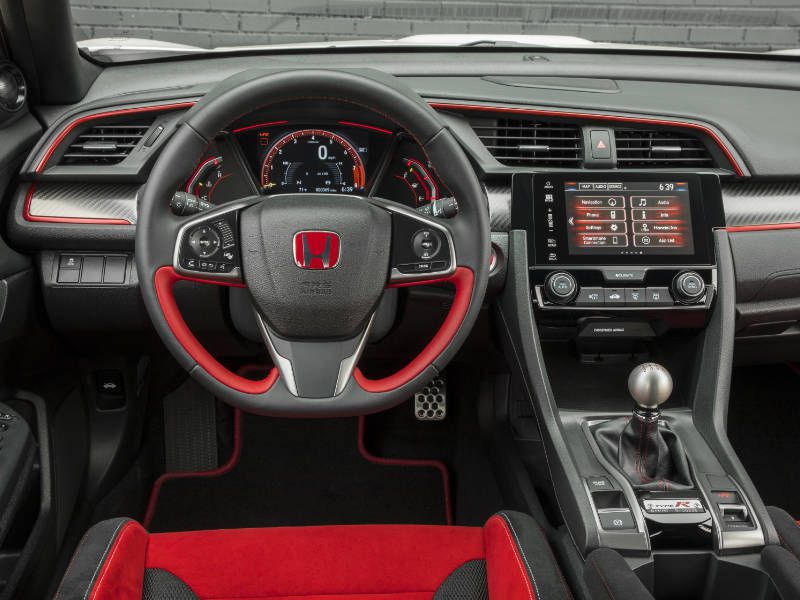
Photo by Honda
Utility
The Focus RS offers seating for five and 20 cubic feet of storage with the rear seats in place. The Civic Type R only seats four, but cargo volume reaches 26 cubic feet. Helping the Type R take the overall win here is its 97 cubic feet of passenger volume compared to the Focus’ 91. To put it simply, the Civic is more versatile.
: Honda Civic Type R
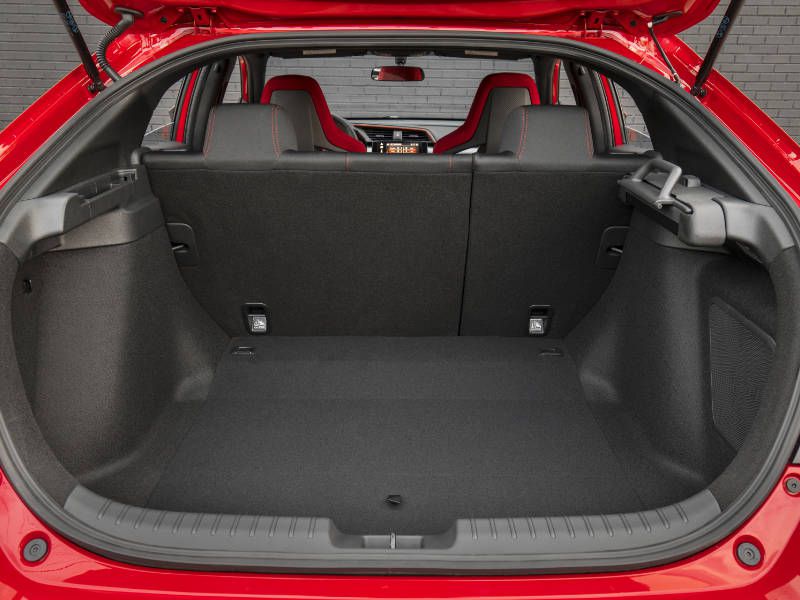
Photo by Honda
Value
Beyond its mega power, good looks, and buzz-worthy “drift mode,” Focus RS standard equipment includes dual-zone climate control, heated front seats, keyless access, push-button ignition, heated side mirrors and ambient interior lighting. The only options are Michelin Pilot Sport Cup 2 tires ($550) and a moonroof ($895). Prices start at $41,120. The Civic Type R has no extra-cost options but every car ships with dual-zone climate control, HondaLink, keyless access, and push-button ignition. We wish the Type R was available with grippier tires, but with a price tag of $34,775, we’ll take the thousands of dollars in savings and get our own rubber (with plenty left over). With similar equipment, performance and pizzazz, it undercuts the Ford by $6,300.
: Honda Civic Type R
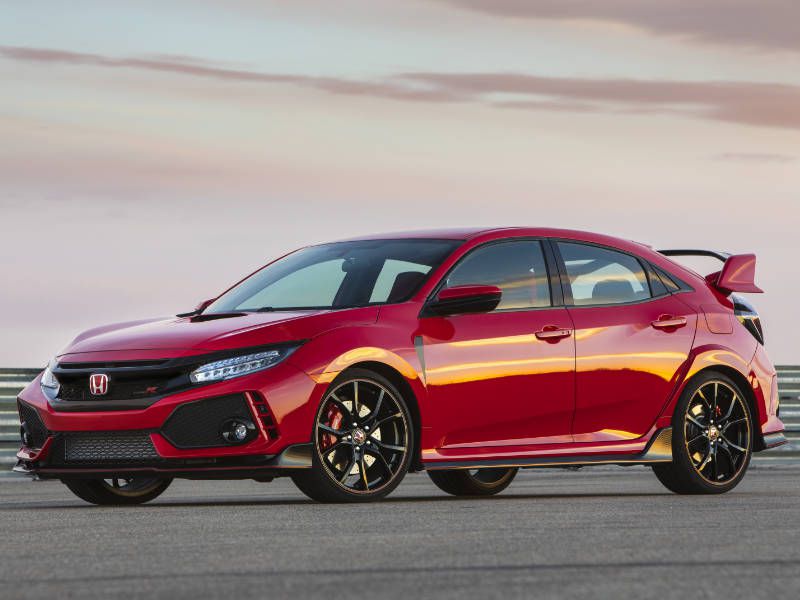
Photo by Honda
Verdict
Tallying up our wins and losses, it looks like the Civic Type R takes a narrow victory over the Focus RS — but in reality, it’s a much wider margin. The Focus RS is a truly impressive performance car, but the penalty one must pay to live with it every day is far too high. In exchange for fractionally lower limits, the Type R awards driver and passenger with usability and comfort. Unless you live at the track, the Type R is the hot hatch to have.
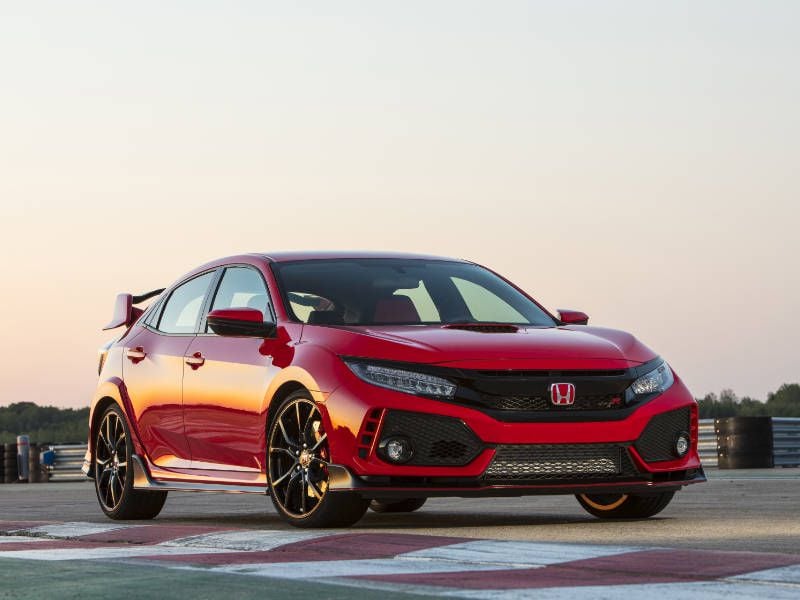
Photo by Honda